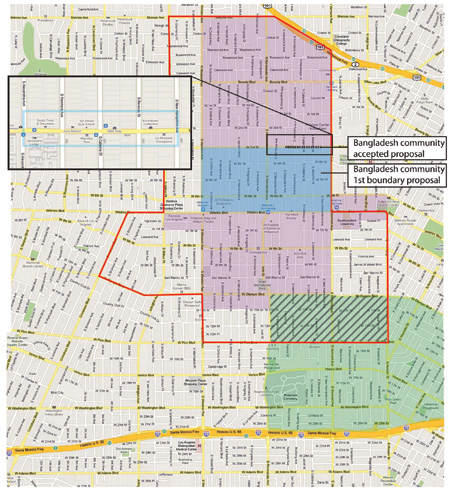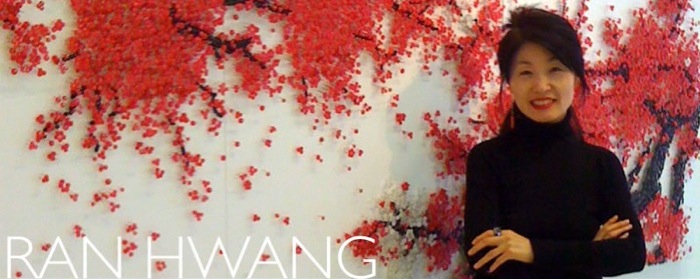 The proposed and accepted boundaries of Little Bangladesh, a sub-district within Los Angeles Koreatown. Courtesy of the Korean American Federation of Los Angeles.
The proposed and accepted boundaries of Little Bangladesh, a sub-district within Los Angeles Koreatown. Courtesy of the Korean American Federation of Los Angeles.
By Ellis Song
Titles, names, denominations, and brands are all attempts at definition and recognition. These labels are used to identify what someone, or something, is. However, these labels also help determine what someone, or something, is not.
Koreatown occupies approximately five square-miles of property in the heart of Los Angeles. For decades, it’s been known as “Koreatown.” At least, that’s how things used to be.
Last year, the Little Bangladesh Project, a committee of Bangladeshis in Los Angeles, petitioned to have a 50-square-block area in Los Angeles proper designated as “Little Bangladesh.” The problem? This area stood within what was commonly known as “Koreatown.” Or at least that’s what most Koreans had thought. Though the neighborhood is called “Koreatown,” and signs within the neighborhood and just off the Interstate 10 indicated the area as such, it has never been officially designated.
Thus, the borders of Koreatown were ambiguous at best.
“We know we have a Koreatown here,” says Chang Lee, chairman of the L.A.-based Korean American Federation, an umbrella group of more than 200 community organizations. “We assumed that there was a designation or boundary, but we found out that while people called this area ‘Koreatown,’ no one had any record of where exactly the borders lay.”
Quickly realizing this, the Korean American Federation, along with other community groups, filed their own petition, setting the scene for a showdown of sorts with their immigrant Bangladeshi neighbors.
The federation asked that several square miles between downtown and Hancock Park be deemed Koreatown. The Bangladeshi community wanted to stake their claim in the area bordered by Third Street, Wilshire Boulevard, Vermont and Western Avenues. But the Koreans weren’t willing to give up so much of what they considered their own stomping ground.
One year later, there appears to be a resolution between the two sides. After much discussion and mediation by the Los Angeles City Council, the four blocks from New Hampshire to Alexandria Avenues are now designated “Little Bangladesh.” It represents a large reduction from the original request (see map). It will also serve as a sub-district within the larger Koreatown.
The process to define Koreatown’s borders, however imminent, will take some time. Lee estimates it will take about a year before the City Council makes an official decision.
Some observers might ask: is all this naming and demarcating much ado about nothing? Lee says no.
“It benefits Koreans in that we [can] identify certain projects within our area, and introduce cultural, historical and other aspects to promote Korean American heritage,” he says.
Even sans official borders, Koreatown has been designated a “Preserve America neighborhood,” a federal program chaired by First Lady Michelle Obama. Under the program, some $250,000 in grants were distributed to five different communities, including Koreatown, this year. With the grants, the Korean, Filipino, Japanese, Chinese and Thai communities are expected to promote tourism and create jobs.
Lee notes that the Bangladeshi community now supports the effort to define Koreatown.
Despite the decrease in boundary size from what they originally hoped and applied for, members of the Bangladeshi community are pleased to have an area to call their own.
“We’re very satisfied with the borders,” says Muhammad Shamim Hussain, the president of the Bangladeshi American Democratic Party of California. Hussain was an active member of the Little Bangladesh Project.
He says that the newly branded Little Bangladesh will offer a sense of pride and, hopefully, improve business and attract investors. He also envisions a positive working relationship and cultural exchange with the Korean American community.
“We’d like to work side by side with the Koreans,” Hussain says.









